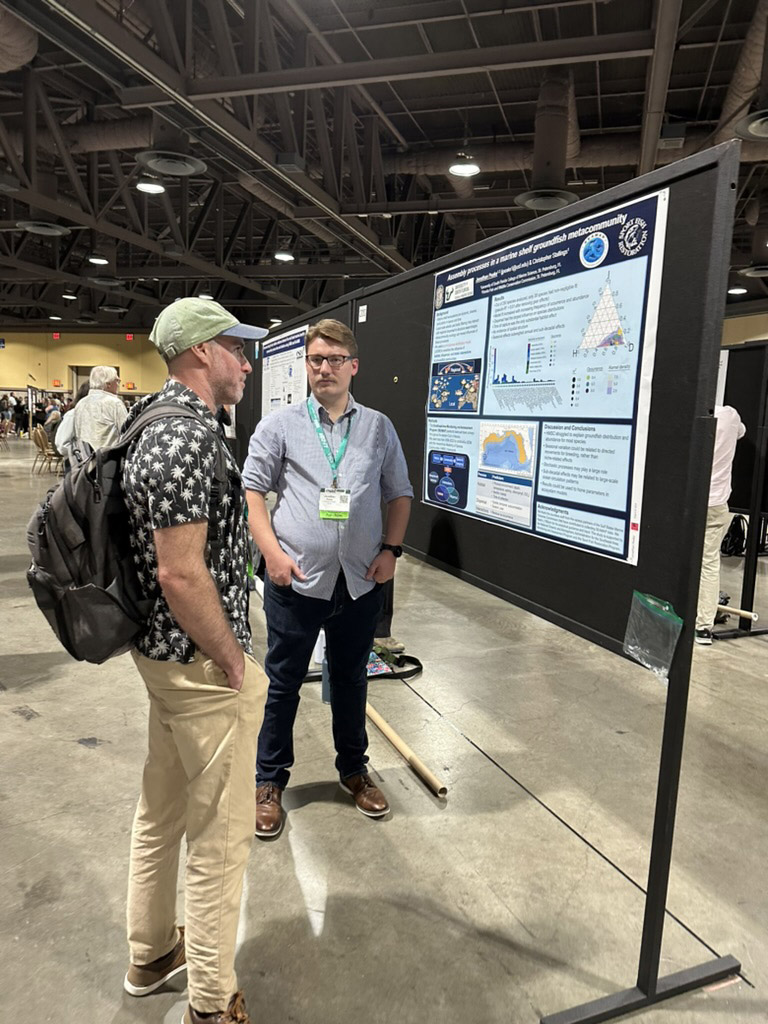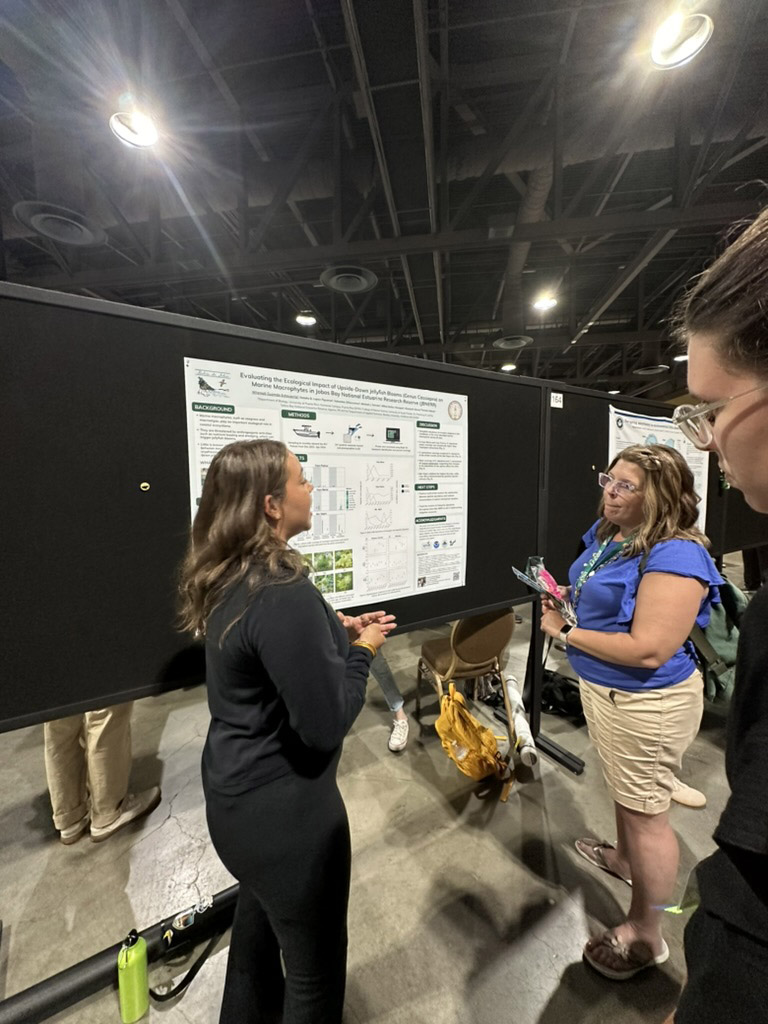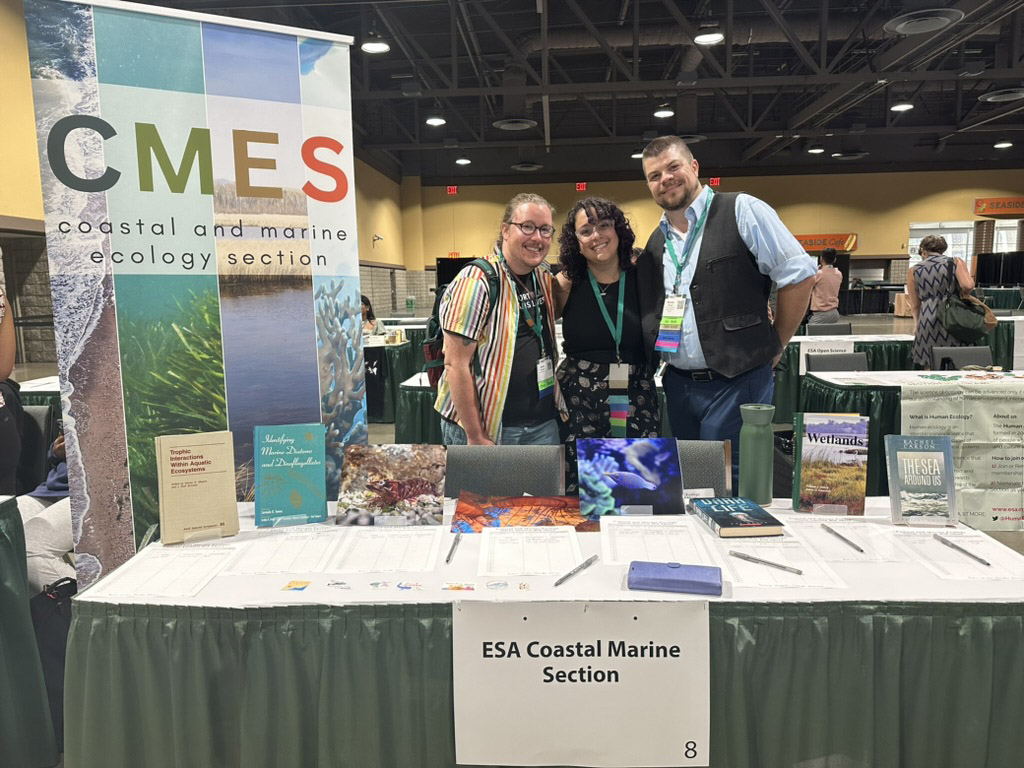Written by: Carlyn Scott, Communications Manager
Natalia López Figueroa, a doctoral candidate at the USF College of Marine Science, had been involved with the Ecological Society of America (ESA) for almost 12 years when she decided to address a problem.
As a marine ecologist, she often struggled to find an audience for her research among the mostly terrestrial and freshwater ecologists who comprise ESA. Taking matters into her own hands, López Figueroa posted a question on the ESA community message board: Who’s interested in a coastal and marine ecology section?
Her inquiry was met with an overwhelmingly positive response.
López Figueroa collaborated with Michael Schram, a doctoral candidate at CMS, and Shelby Rinehart, an assistant professor at Drexel University, to establish the coastal and marine ecology section and secure representation on the ESA council. López Figueroa now serves as the section’s chair, Schram as vicechair, and Rinehart as secretary.
“Our main goal is to have a place where marine and coastal ecologists can feel a sense of belonging, and work alongside the aquatic ecology section to increase the presence and retention of non-terrestrial ecologists in ESA,” said López Figueroa.

Another CMS doctoral candidate, Jon Peake, presents his research in the newly minted coastal and marine ecology poster session.
The new section met for the first time at the 2024 ESA annual meeting from August 4-9 in Long Beach, California. The coastal and marine ecology section held three oral sessions and two poster sessions, underscoring the demand for a dedicated space in ESA for these research interests.
“It was rewarding when several speakers expressed their appreciation for the opportunity to present their work to a niche audience within ESA’s broader scientific community,” said Schram, who moderated the three oral sessions.
López Figueroa said, “At the moment, I am the only Latina serving on the ESA council who is also a section chair. It was humbling when people from diverse backgrounds approached me to express how they feel represented within ESA by my work on the council.”
Founded in 1915, ESA has a variety of sections organized by research interests. The section on marine and coastal ecology will further advance the organization’s goal to enhance ecological science by fostering collaboration between ecologists across the field.
"Natalia and Michael’s effort to launch this new section within ESA is a testament to the caliber of students at the College of Marine Science,” said Tom Frazer, professor and dean of CMS. “Changes of this magnitude are not often initiated by graduate students. As a dean, I’m proud. As an ecologist, I’m grateful.”

A student presents their research during a poster session in the first coastal and marine ecology session at ESA.
